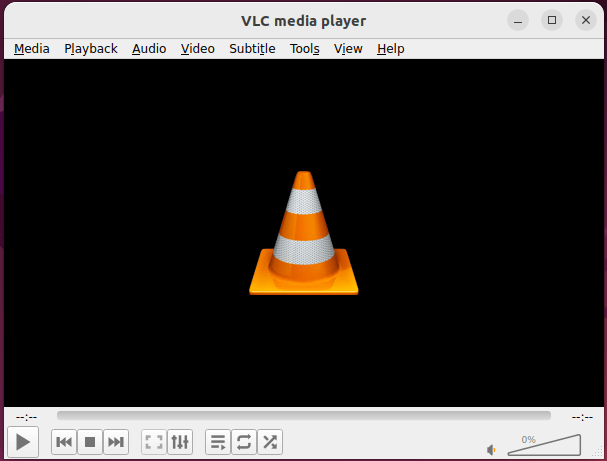How To Install VLC Media Player on AlmaLinux 9

VLC Media Player is a versatile and powerful multimedia player that has become a staple for users across various operating systems. Its ability to play almost any audio or video format makes it an essential tool for both casual users and professionals. For AlmaLinux 9 users, installing VLC can significantly enhance their multimedia experience. This comprehensive guide will walk you through the process of installing VLC Media Player on AlmaLinux 9, exploring different methods and providing troubleshooting tips to ensure a smooth installation and usage experience.
What is VLC Media Player?
VLC Media Player, often simply referred to as VLC, is a free and open-source multimedia player and framework developed by the VideoLAN project. It’s renowned for its versatility and robust feature set, making it a go-to choice for users worldwide. Some key features of VLC include:
- Support for a wide range of audio and video formats
- Built-in codecs, eliminating the need for separate codec installations
- Streaming capabilities for both local and network media
- Advanced playback controls and customization options
- Cross-platform compatibility, available on Windows, macOS, Linux, and mobile platforms
VLC’s ability to handle complex media tasks, coupled with its user-friendly interface, has made it a favorite among both novice and advanced users. Its open-source nature ensures continuous improvements and updates, keeping it at the forefront of multimedia software.
Why Install VLC on AlmaLinux 9?
AlmaLinux 9, as a stable and free enterprise-grade Linux distribution, provides a solid foundation for various applications. However, when it comes to multimedia playback, the default options may not always meet the diverse needs of users. Here’s why installing VLC on AlmaLinux 9 is beneficial:
- Comprehensive format support: VLC can play virtually any media file, overcoming limitations of default players
- Enhanced performance: VLC is optimized for efficient resource usage, ensuring smooth playback even on older hardware
- Advanced features: Subtitles support, video effects, and streaming capabilities extend the functionality beyond basic playback
- Regular updates: VLC’s active development ensures compatibility with the latest multimedia formats and security patches
By installing VLC on AlmaLinux 9, users can enjoy a seamless multimedia experience without worrying about codec issues or format incompatibilities. It’s an ideal solution for both personal and professional use, catering to a wide range of multimedia needs.
Prerequisites
Before proceeding with the installation of VLC Media Player on AlmaLinux 9, ensure that you have the following:
- A system running AlmaLinux 9 with at least 2GB of RAM and 50MB of free disk space
- Administrative access (sudo privileges) to install packages and modify system settings
- A stable internet connection for downloading packages and repositories
- Basic familiarity with the command line interface (CLI)
With these prerequisites in place, you’re ready to explore the different methods of installing VLC on your AlmaLinux 9 system.
Method 1: Installing VLC via EPEL Repository
The Extra Packages for Enterprise Linux (EPEL) repository is a valuable resource for AlmaLinux users, providing additional packages not included in the default repositories. Installing VLC through EPEL is often the simplest and most straightforward method. Follow these steps:
1. Enable the EPEL Repository
Open a terminal and run the following command to enable the EPEL repository:
sudo dnf install epel-release2. Update System Packages
Before installing VLC, it’s a good practice to update your system packages:
sudo dnf update3. Install VLC Using DNF
With the EPEL repository enabled, you can now install VLC using the dnf package manager:
sudo dnf install vlcThis command will download and install VLC along with its dependencies. You may be prompted to confirm the installation; press ‘Y’ and Enter to proceed.
4. Verify the Installation
After the installation completes, verify that VLC is installed correctly by checking its version:
vlc --versionIf the installation was successful, you should see the VLC version information displayed in the terminal.
Method 2: Installing VLC via Flatpak
Flatpak is a universal package management system that allows for easy installation and management of applications across different Linux distributions. Installing VLC via Flatpak can provide benefits such as isolation from system libraries and easy updates. Here’s how to install VLC using Flatpak on AlmaLinux 9:
1. Install Flatpak on AlmaLinux 9
First, ensure that Flatpak is installed on your system:
sudo dnf install flatpak2. Add the Flathub Repository
Flathub is the primary repository for Flatpak applications. Add it to your system with this command:
flatpak remote-add --if-not-exists flathub https://flathub.org/repo/flathub.flatpakrepo3. Install VLC Using Flatpak
Now you can install VLC using Flatpak:
flatpak install flathub org.videolan.VLCFollow the prompts to complete the installation.
4. Running VLC as a Flatpak Application
To run VLC installed via Flatpak, use the following command:
flatpak run org.videolan.VLCAlternatively, you can launch VLC from your application menu, where it should appear after installation.

Method 3: Building VLC from Source
For users who prefer the latest features or need specific customizations, building VLC from source is an option. This method requires more technical knowledge but offers greater control over the installation. Here’s a general outline of the process:
1. Install Build Dependencies
First, install the necessary build tools and dependencies:
sudo dnf groupinstall "Development Tools"
sudo dnf install gcc-c++ yasm lua-devel libXv-devel libva-devel2. Download VLC Source Code
Download the latest VLC source code from the official website:
wget https://get.videolan.org/vlc/3.0.9.2/vlc-3.0.9.2.tar.xz
tar -xf vlc-3.0.9.2.tar.xz
cd vlc-3.0.9.23. Compile and Install VLC
Configure, compile, and install VLC:
./configure
make
sudo make installThis process can take some time, depending on your system’s capabilities.
Configuring VLC Media Player
After installing VLC, you may want to configure it to suit your preferences. Here are some areas you can customize:
Basic Settings and Preferences
- Open VLC and go to Tools > Preferences
- Adjust audio and video output settings
- Configure subtitle preferences
- Set up network streaming options if needed
Customizing the Interface
VLC allows for extensive interface customization:
- Change the appearance by selecting different skins (View > Add Interface > Skins2)
- Modify toolbar layout (View > Customize Interface)
- Adjust playlist and media library views
Setting Up Keyboard Shortcuts
Customize keyboard shortcuts for quick access to frequently used functions:
- Go to Tools > Preferences > Hotkeys
- Select a function and assign a new keyboard shortcut
- Click “Save” to apply changes
Troubleshooting Common Issues
While VLC is generally stable, you might encounter some issues. Here are solutions to common problems:
Dependency Problems
If you face dependency issues during installation, try the following:
sudo dnf clean all
sudo dnf update
sudo dnf install vlc --allowerasingAudio or Video Playback Issues
- Ensure your system’s audio is not muted
- Try different audio and video output modules in VLC preferences
- Check if the media file is corrupted by testing it in another player
Performance Optimization
If VLC is running slowly:
- Disable hardware acceleration in VLC preferences
- Reduce video quality settings for smoother playback
- Close other resource-intensive applications
Updating and Maintaining VLC
Keeping VLC up to date ensures you have the latest features and security patches:
Updating VLC
For EPEL installations:
sudo dnf update vlcFor Flatpak installations:
flatpak update org.videolan.VLCRemoving or Reinstalling VLC
To remove VLC (EPEL installation):
sudo dnf remove vlcTo remove VLC (Flatpak installation):
flatpak uninstall org.videolan.VLCTo reinstall, simply follow the installation steps for your preferred method.
Congratulations! You have successfully installed VLC. Thanks for using this tutorial for installing VLC Media Player on your AlmaLinux 9 system. For additional help or useful information, we recommend you check the official VLC website.